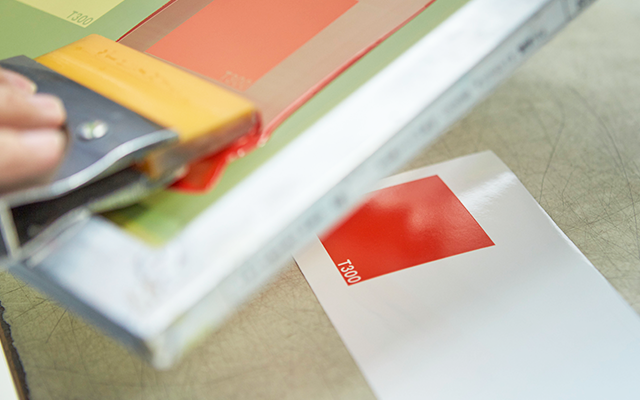- SPECIAL APPLICATIONS
HOW TO SOLVE THE PROBLEMS OF PAD PRINTING
| Problems | Conditions | Causes | Countermeasures |
|---|---|---|---|
| Defective pattern | Ink remains on the plate. | (1) pad is new. | Wipe the pad with solvent-soaked cloth. |
| (2) pad is too soft. | Substitute the pad with the harder one. | ||
| (3) Ink is too viscous. | Add thinner to lower viscosity. | ||
| (4) Ink dries too fast. | Use thinner of slow dry type. | ||
| (5) Unsuitable thinner. | Use designated thinner. | ||
| Blotting, Unevenness of solid color | Ink remains on the pad after printing. | (1) pad is too hard. | Substitute the pad with the softer one. |
| (2) Too much thinner. | Add ink. | ||
| (3) Ink dries too slowly. | Use thinner of fast dry type. | ||
| (4) Printing speed is too fast. | Slow down the printing speed. | ||
| (5) Attrition of the pad. (Max: 30,000-50,000 times) |
Replace the pad with the new one. | ||
| Misting | A pattern is spoiled by thread-like ink. | (1) Static electricity. | Raise humidity in the printing room. |
| (2) pad rises too fast. | Slow down the rising speed. | ||
| (3) The shape of pad is unsuitable. | Replace the pad with the pointed one. | ||
| (4) Ink is too viscous. | Add COMPOUND. | ||
| Pinholes | Foam appears at the edge of the pattern. | (1) ttrition of a blade. (Max: 5,000-30,000 times) |
Replace the blade with the new one. |
| (2) blade is stained. | Clean the edge of the blade. | ||
| Crawling. | (1) Too much thinner is added. | Add ink. | |
| (2) Printed surface is stained. | Clean the surface with alcohol, etc. | ||
| (3) jLevelling agent is not enough. | Add levelling agent. | ||
| Distortion | A pattern is distorted. | (1) pad is pushed too strongly. | Push the pad lightly. |
| (2) Printed material is not fixed. | Check the receiver of the material. | ||
| Poor adhesion | Fail in scotch tape peeling or nail scratching test. | (1) Choice of ink is wrong. | Choose suitable ink for the material. |
| (2) Insufficient drying or curing. | Dry or cure completely. | ||
| (3) Printed surface is stained. | Clean the surface with alcohol, etc. | ||
| (4) Density of ink is too high. | Use ink of lower density. | ||
| Poor physical properties | Poor resistance to abrasion or solvent. | (1) Choice of ink is wrong. | Chooose correct ink series. |
| (2) Insufficient drying or curing. | Dry or cure completely especially in case of two-component type. | ||
| (3) Ink film is thin. | Deepen the etching of the plate or print two or three times. | ||
| Poor opacity | Base color shows through ver-printed ink. | (1) Opacity of ink is insufficient. | Choose high-opacity ink. |
| (2) Ink film is too thin. | Deepen the etching of the plate or print two or three times. | ||
| Low gloss | Finish is matt. | (1) Choice of ink is wrong. | Choose the gloss type of ink. |
| (2) Two-pack type of ink exceeds its pot life. | Replace the ink. | ||
| (3) Unsuitable thinner. | Use designated thinner. | ||
| Poor stability of color-matched ink | Density or color shades change during print or storage. | (1) Ink is color-matched with the different series of inks. | Match colors with the same ink series. |
| (2) Unsuitable thinner. | Use designated thinner. |




